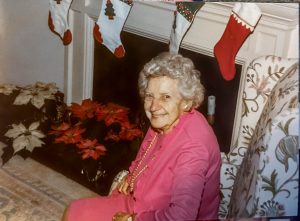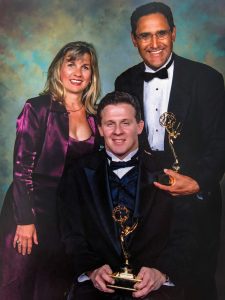Storytelling remains humanity’s most powerful tool for connection, teaching, and change
As PN’s editor-in-chief, I have this column to say almost anything I want. I keep in mind who is most likely reading it and do my best to be relevant, but most of all I want it to have some kind of impact. It’s why I ask for your feedback at the end of every column.

I have plenty of stories to tell, but I tend to go on a bit too long, I often lose my train of thought and my wife complains that I’m hard to follow. In other words, I’ll never be a prodigious storyteller like Mark Twain, I’m no threat to Shakespeare, and Ken Burns will never interview me for any of his PBS docuseries.
Nevertheless, I appreciate the value of storytelling. Sure, I get why my kids want me to read The Adventures of Ava and Rory and Room on the Broom as they try to stay up past their bedtime.
As kids get older, we can use storytelling as a valuable tool to communicate with them and hopefully we can encourage them to learn, grow and understand the world around them. Storytelling taps into our capacity for empathy, emotion and allows us to connect with others, which is why it’s so effective when we try to pass on traditions, teach history or advocate for a cause.
Obviously, storytelling as a tool to teach isn’t a new revelation. Humans have been telling stories ever since they figured out how to express thoughts. Scholars believe the Cosmic Hunt is the oldest documented story ever told. Potentially dating back at least 15,000 years, it’s about hunters pursuing an animal that has stolen the sun. Adopted by many cultures, it’s been passed down by many tribal elders.
Speaking of storytelling elders, my great-grandmother, aka “Grandmom,” had a story for every occasion. Born in 1897, she never learned to read or write. When she was 95 years old, my siblings and I sat her down at our dining room table and served her favorite cocktail, a Harvey Wallbanger. With a cassette recorder at the ready, we asked her to impart her life experiences to us with hopes of preserving family lore.
Grandmom began with stories about our family prior to their arrival to the United States, then continued with memories of growing up in Philadelphia during the early 1900s, which I found most impactful. However, after Grandmom’s second cocktail, she transitioned to a few nonsensical limericks, a depressing song about someone confessing to the murder of a young boy and an intriguing explanation as to why she was called “Red Hot Mamma from the Bahamas” on a cruise ship during prohibition.
Sure, Grandmom’s storytelling session got a little silly at times. But we learned a lot about members of our family who we’ll never meet, and we have a unique perspective on growing up as a kid in Philadelphia in the early 1900s that no history book could ever teach us. And for that I’m grateful, but not all effective storytelling needs to be about hunting a mystical creature or experiencing historical events. And old people aren’t the only ones with the necessary skill set to tell a good story.
Matter of fact, I know someone who’s really good at storytelling, and he’s made a great career of it.

I met Pete Fuentes in 1998. He had a storied career in broadcast journalism following a stint in the U.S. Army as a broadcast specialist with American Forces Radio.
Pete spent a lot of time at my home picking my brain for something useful. The only caveat Pete conveyed to me was there had to be a lesson learned or an opportunity for change as a result of telling the story.
Before long, our collaboration resulted in a respectable repertoire, including four Emmy-winning stories and two Golden Mics.
Pete’s skill of storytelling always highlighted the aspects of human nature; the good, the bad and all the complex stuff in between.
One day Pete said he had an idea for a story that might bring change to one of the U.S. government’s biggest agencies — the Department of Veterans Affairs (VA). I thought his idea was ambitious and intriguing, but when he told me he was going to use me as an example of the human impact, I hesitated.
Truth be told, I had been in poor health for more than two years and confined to my bed at home waiting for the VA to schedule surgeries for a chronic pressure sore. I had unintentionally become a recluse, with Pete being my only visitor. I asked myself, “Do I really want the world to know everything about my personal health?”
However, Pete was always available when I needed him, and his capacity for determined optimism was contagious. For these reasons, I agreed to participate in his scheme. Cue Survivor’s iconic 1982 hit, Eye of the Tiger.
Pete immersed himself in all things VA. He interviewed the then-secretary of the VA, two local congressional representatives, including a member of the House Committee on Veterans’ Affairs, the San Diego VA hospital director and representatives from Paralyzed Veterans of America who were familiar with my case.
Immediately following the airing of Pete’s story, a third congressional representative from the San Diego area was on C-SPAN using my case in her argument to increase VA funding. Apparently, the story had resonated with the right people, and just days later, the VA admitted me into the hospital for surgery.
I’m forever indebted to Pete for using his skills as an effective storyteller to advocate on my behalf and try to effect change at the VA.
Like every good story, there’s a happy ending for Pete. He retired with 23 Emmys and contributed to 10 additional awards for his team of photographers and editors.
Whether you’re a tribal elder passing on traditions to the next generation, a great-grandmother entertaining the family or a professional journalist advocating for a friend, never underestimate the power of storytelling.
Do you have a good story to tell?
As always, please share your thoughts with me at al@pvamag.com

